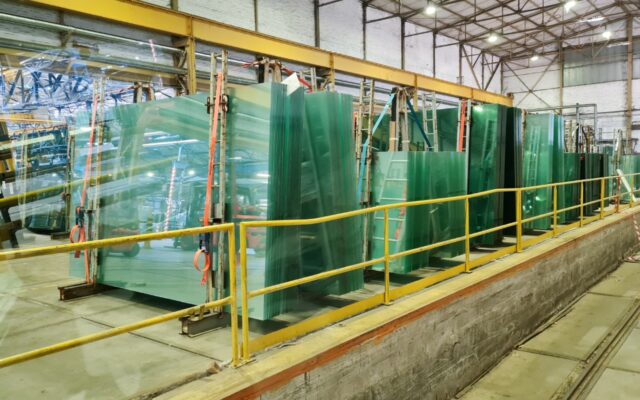Manufacturing is the backbone of the global economy. Its cornerstone is innovation, which manufacturers have used to reinvent success repeatedly to improve processes and production. Recent global events and supply chain challenges, however, have magnified the need for improved reliability and resiliency – and starkly highlighted that even the most successful manufacturers have much to gain from operational optimization.
A recent study by McKinsey shows that more than half of the manufacturing opportunity for improvement is based on optimizing operations. Collectively, these operational improvements equate to billions of dollars.
For example, consider a 10% productivity improvement in a typical 80-hour weekly factory production schedule. That equates to eight hours of unlocked production hours in a week. If those eight hours are used for producing additional units of volume, it could generate hundreds of millions of dollars in top-line revenue. Alternately, reducing those hours could save costs in the tens of millions of dollars. Or simply reinvesting the time into changeovers potentially reduces inventory and/or elevates service levels for customers.
Challenges to Operational Optimization
Challenges inherent across manufacturing environments, however, impede smart manufacturing outcomes. Infrastructure limitations and unscalable applications create IT management issues and data management complexities. Data is useful only if it enables and supports better decisions that impact manufacturing KPIs such as productivity, asset utilization, OEE, etc.
Today, manufacturers are inundated with timely, accurate data. However, many of them struggle to manage, sort, organize, curate, and deliver valuable insights from all these data streams.
The power of simplification
Due to the challenges above, manufacturers have seen mixed results in their efforts to implement Continuous Process Improvement (CPI). Change is crucial. Organizations need a simplified path to gain prioritized insights that focus on opportunities with maximum business impact. This would help companies transition from the scattergun approach that builds mini-technology silos to a laser-focused approach that aligns digital transformation efforts with business value.
An enhanced, outcome-based solution
Dell Technologies has partnered with PTC to address these manufacturing challenges, especially in the automotive, aerospace and defence industries, by enhancing their joint validated design for manufacturing edge. This will be the first enterprise-scale, validated deployment of PTC’s Digital Performance Management (DPM) capabilities using Dell’s leading-edge infrastructure. The Dell Validated Design for Manufacturing Edge with PTC will simplify the path to edge insights for operational excellence with:
-
- Consolidation and interoperability: Simplify the complexity of infrastructure management by consolidating legacy systems and applications into a single technology stack.
- Prioritized operations insights: Unlock production hours with top-down performance management, captured and shared as ‘time lost’.
- Secure scalability: Ensure fast, secure, and resilient edge performance with the underlying hyper-converged infrastructure (HCI)—VxRail.
Consolidation and interoperability: The solution is built with a flexible, interoperable design, which simplifies the complexity of infrastructure management by consolidating legacy systems and applications into a single technology stack. It supports multiple partners, industrial automation systems, and other enterprise applications with multi-cloud connectivity.
Prioritized operational insights: The solution leverages DPM, an extension of ThingWorx, to identify, prioritize and solve the biggest issues that constrain productivity on the factory floor. The DPM builds a single source of truth for production performance monitoring, normalized to a standard metric of ‘time lost’.
DPM replaces outdated reporting tools with six dashboards geared toward specific analyses:
-
- Bottleneck Analysis: Identify and remove bottlenecks in manufacturing
- Time Loss Waterfall: Using time (hours lost) to diagnose issues within manufacturing
- Scorecard: Enterprise-level roll-up of manufacturing KPIs
- Production: Visualization of production operations (dashboard)
- Action Tracker: Dashboard tracker to solve identified issues in manufacturing
- Loss Reason Pareto: Drill down capability to establish root cause/hours lost
DPM Dashboards Geared Toward Specific Operational Analyses
Secure scalability: The most critical linchpin for a successful edge deployment is secure scalability across use cases and factory sites. Built on VxRail, the industry-leading HCI, this validated design is right-sized based on factory outcomes and workloads. The solution reinforces security, from the edge to the enterprise cloud, with an OT/IT DMZ layer and built-in security layers of VxRail.
Simplify your path to edge insights that drive operational excellence
To summarize, the Dell Validated Design for Manufacturing Edge with PTC is helping manufacturers accelerate their digital transformation to smart manufacturing using a secure, scalable, and interoperable edge solution to improve business outcomes. The solution enhancement will simplify the existing infrastructure complexities at the edge and make it easier for manufacturers to identify root cause problems that impact operational productivity and make decisions around Continuous Process Improvement for maximum business impact.



